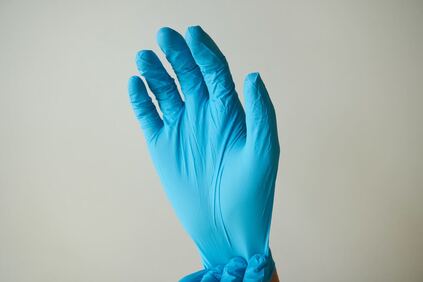Latex Allergies

Latex allergies occur when your immune system mistakes latex for a harmful substance. The symptoms caused by this range from sneezing to anaphylaxis, a life-threatening condition.
What Is Latex?
Latex is a natural product which comes from the light milky fluid that is extracted from the rubber tree. This milky fluid is often modified during the manufacturing process to form a latex mixture. A person can be allergic to the latex or the mixture or both.
What Is A Latex Allergy?
If you have a latex allergy, your immune system identifies latex as a harmful substance and launches antibodies to fight against the latex. This produces the symptoms of the allergy.
Latex Allergy Symptoms
If you are allergic to latex, you can react after being in contact with latex fin any form, such as rubber gloves, or inhaling airborne latex particles, such as those that are released when latex gloves are removed or from balloons made of latex.
Symptoms of latex allergy can be mild, like itching, skin redness, or hives and skin rash. More sever symptoms would include scratchy throat, wheezing, and cough.
Signs of Anaphylactic Shock:
Latex Allergy Diagnosis
Diagnosing a latex allergy involves learning your medical history of latex allergy experiences and other allergy symptoms, as well as a physical exam to identify or exclude any other medical issues that may be effecting the allergy.
There are two tests used to determine the latex allergy. The skin test and blood test. The skin test involves a prick of the skin, and exposure to latex. With observation to the skin's reaction. The blood test measures your blood's response to latex by seeing if there is an antibody response in the blood after exposure to latex.
Treating Latex Allergy
Once you've properly been diagnosed with the latex allergy, treatment is based on prevention. Avoiding latex products is the number one treatment against the allergy, as there is no cure.
There are medications that can reduce the symptoms of latex allergy.
We know that the right care can make the difference between suffering with an allergic skin reaction and feeling better. We work closely with you to develop a strategy that works for you in treating and maintaining optimal personal health so you can feel better and therefore live better.
Some Latex-Containing Products
What Is Latex?
Latex is a natural product which comes from the light milky fluid that is extracted from the rubber tree. This milky fluid is often modified during the manufacturing process to form a latex mixture. A person can be allergic to the latex or the mixture or both.
What Is A Latex Allergy?
If you have a latex allergy, your immune system identifies latex as a harmful substance and launches antibodies to fight against the latex. This produces the symptoms of the allergy.
Latex Allergy Symptoms
If you are allergic to latex, you can react after being in contact with latex fin any form, such as rubber gloves, or inhaling airborne latex particles, such as those that are released when latex gloves are removed or from balloons made of latex.
Symptoms of latex allergy can be mild, like itching, skin redness, or hives and skin rash. More sever symptoms would include scratchy throat, wheezing, and cough.
Signs of Anaphylactic Shock:
- Difficulty breathing
- Wheezing
- Blood pressure drop
- Loss of consciousness
- Confusion
- Slurred speech
- Blueness of the skin
- Diarrhea
- Nausea and vomiting
Latex Allergy Diagnosis
Diagnosing a latex allergy involves learning your medical history of latex allergy experiences and other allergy symptoms, as well as a physical exam to identify or exclude any other medical issues that may be effecting the allergy.
There are two tests used to determine the latex allergy. The skin test and blood test. The skin test involves a prick of the skin, and exposure to latex. With observation to the skin's reaction. The blood test measures your blood's response to latex by seeing if there is an antibody response in the blood after exposure to latex.
Treating Latex Allergy
Once you've properly been diagnosed with the latex allergy, treatment is based on prevention. Avoiding latex products is the number one treatment against the allergy, as there is no cure.
There are medications that can reduce the symptoms of latex allergy.
We know that the right care can make the difference between suffering with an allergic skin reaction and feeling better. We work closely with you to develop a strategy that works for you in treating and maintaining optimal personal health so you can feel better and therefore live better.
Some Latex-Containing Products
- Baby bottle nipples
- Balloons
- Band-aids
- Carpeting
- Condoms
- Catheters
- Diaphragms
- Dishwashing gloves
- Disposable diapers
- Erasers
- Hot water bottles
- Motorcycle and bicycle handgrips
- Racket handles
- Rubber bands
- Sanitary pads
- Surgical gloves
- Swim goggles
- Waistbands on clothing
